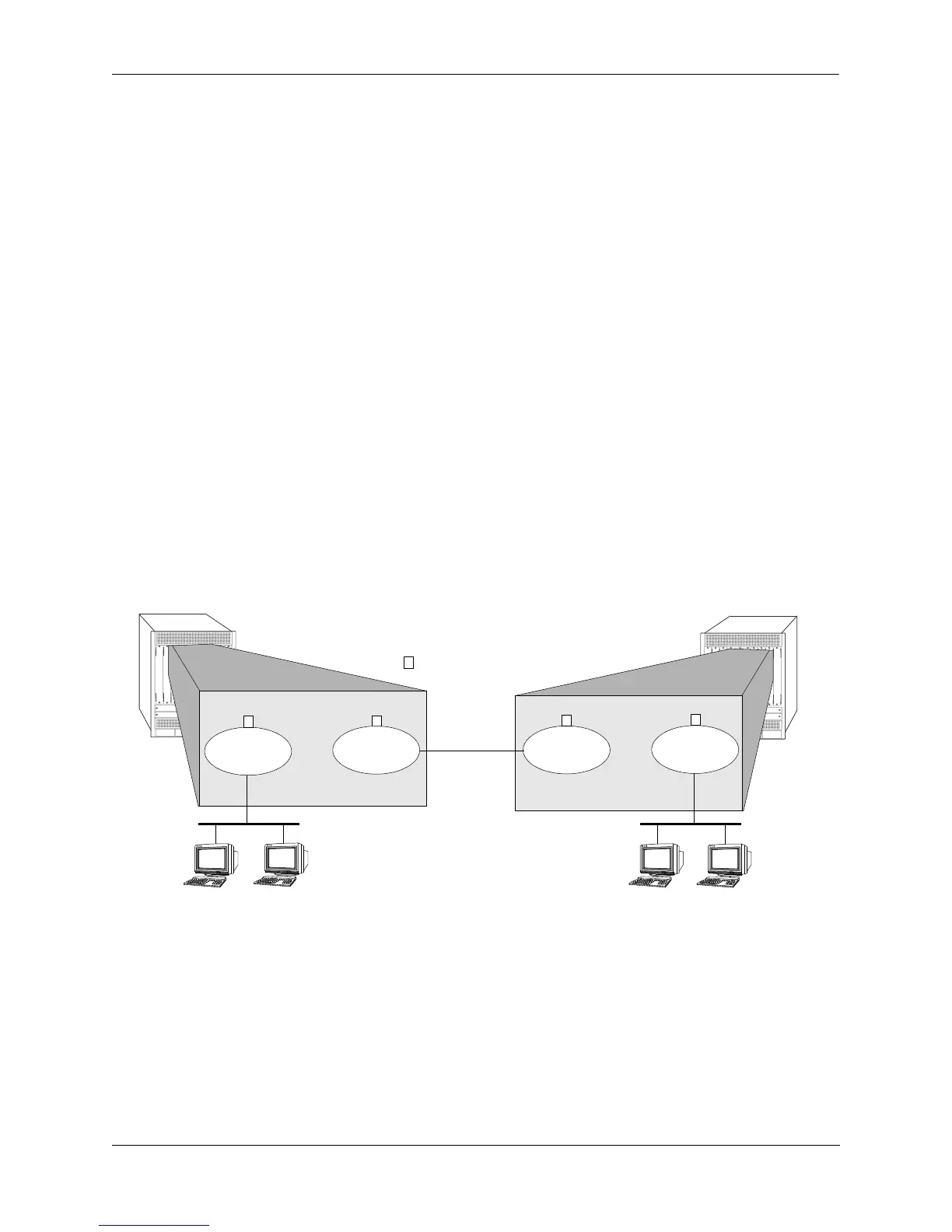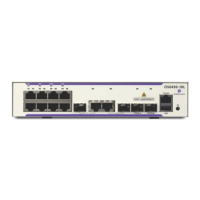OmniSwitch AOS Release 7 Network Configuration Guide March 2011 page 117
IP Forwarding
Network device traffic is bridged (switched) at the Layer 2 level between ports that are assigned to the
same VLAN. However, if a device needs to communicate with another device that belongs to a different
VLAN, then Layer 3 routing is necessary to transmit traffic between the VLANs. Bridging makes the
decision on where to forward packets based on the packet’s destination MAC address; routing makes the
decision on where to forward packets based on the IP network address of the packet (e.g., IP - 21.0.0.10).
Alcatel-Lucent switches support routing of IP traffic. A VLAN is available for routing when at least one
router interface is defined for that VLAN and at least one active port is associated with the VLAN. If a
VLAN does not have a router interface, the ports associated with that VLAN are in essence firewalled
from other VLANs.
IP multinetting is also supported. A network is said to be multinetted when multiple IP subnets are brought
together within a single broadcast domain. Each interface is configured with a different subnet. As a
result, traffic from each configured subnet can coexist on the same VLAN.
In the illustration below, an IP router interface has been configured on each VLAN. Therefore, worksta-
tions connected to ports on VLAN 1 on Switch 1 can communicate with VLAN 2; and workstations
connected to ports on VLAN 3 on Switch 2 can communicate with VLAN 2. Also, ports from both
switches have been assigned to VLAN 2, and a physical connection has been made between the switches.
Therefore, workstations connected to VLAN 1 on Switch 1 can communicate with workstations connected
to VLAN 3 on Switch 2.
IP Forwarding
Configuring an IP Router Interface
IP is enabled by default. Using IP, devices connected to ports on the same VLAN are able to communi-
cate. However, to forward packets to a different VLAN, you must create at least one router interface on
each VLAN.
Switch 2
130.0.0.1 130.0.0.2
VLAN 3
Switch 1
VLAN 1
110.0.0.1 110.0.0.2
Physical
Connection
IP Router Interface
=
VLAN 2
120.0.0.0
VLAN 2
120.0.0.0

